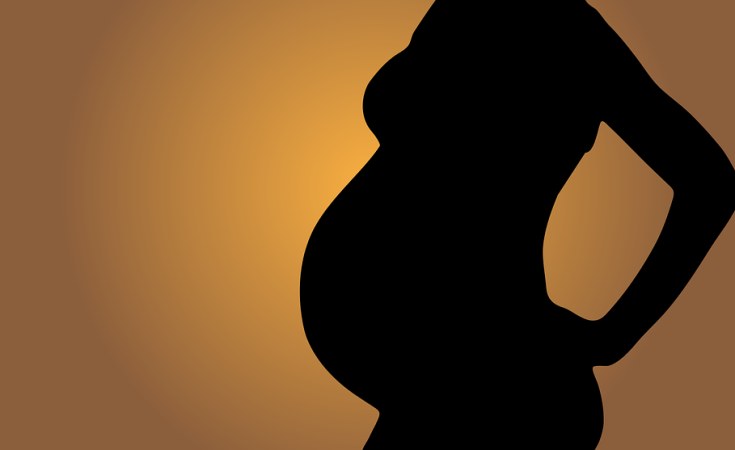PRESIDENT Dr Samia Suluhu Hassan yesterday launched the new Tanzania Demographic and Health Survey and Malaria Indicator Survey (2022 TDHS-MIS), which shows that the country has cut down maternal mortality rate by 80 per cent.
This significant stride implies that Tanzania is on the right track towards achieving the Sustainable Development Goal (SDG) number three of ensuring healthy lives while promoting the well-being of all ages, according to the Head of State.
Dr Samia revealed this at the launch of the 2022 TDHS-MIS and handing over of ambulances and health equipment held in Dar es Salaam, yesterday, stressing that the report shows tremendous achievements made in the country's health sector.
"The report shows that maternal mortality rate in Tanzania has gone down from 530 deaths per 100,000 live births (2015/2016) to 104 deaths per 100,000 live births in 2022...this is a very huge step and 80 per cent drop is a big relief," said Dr Samia.
She noted that the SDG has directed that by 2030, the number of maternal mortality rate in respective countries should not exceed 70 deaths per 100,000 lives, therefore the drop to 104 deaths was a good indication of possibility to arrive at the set goals.
Among other milestones that were noted by the President involved the issue of teenage pregnancy dropping from 27 per cent in the same period to 22 per cent, indicating a five per cent decrease.
She outlined regions that perform well in the area, including Dodoma, Kigoma, Tabora and Shinyanga, while regions leading in reducing teenage pregnancies are Songwe (45 per cent), Ruvuma (37 per cent), Katavi (34 per cent), Mara (31 per cent) and Rukwa (30 per cent).
On the other hand, regions whose prevalence rates have increased include Dar es Salaam from 11.9 to 18.8 per cent and Njombe from 19.7 to 25.5 per cent while regions like Ruvuma the rate has also gone up from 32 to 37.2 per cent, prompting the President to send a message to the Regional authorities to go and re-look at the problem by assessing the underlying causative factors and ensure they move in the required direction.
She directed parents and guardians to protect their girls from falling in the trap of teenage pregnancies by sending them to school, arguing that the government has embarked on various initiatives to improve the learning environment for all, including constructing dormitories in schools.
"We expect to see our girls enjoying their youthful lives by benefiting from the investments which are being put by the government in the education sector. Let's not rush them into issues of reproduction and elderly responsibilities for they also need to be taken care of," she stated.
On the other hand, Dr Samia singled out increased number of pregnant women who give births in health centres from 63 to 81 per cent in the respective period, attributing the increase to government's initiatives to bring health services closer to the people and the promotion of 'Jiongeze Tuwavushe Salama' campaign.
Among other initiatives include efforts carried out by the government in improving the health infrastructure through people's taxes and support from Development Partners.
With regard to stunting in children under five years, she said the rate has dropped from 34 to 30 per cent as well as severe stunting has rapidly decreased in Tanga region (from 14.8 to 5.5 percent) and Dar es Salaam (from 3.8 to 0.9 per cent), applauding the regions for the important steps.
"The CCM manifesto has directed the government to reduce stunting...the report noted that out of 1000 children, 300 were stunting. Such reflects that one third of our children are stunting. The figure is huge," she said.
She noted regions with the highest stunting, including Iringa (57 per cent), Njombe (50 per cent), Rukwa (50 per cent) and Geita (39 per cent), indicating that the numbers were not at all impressive.
"These regions are food producing zones but yet the stunting rate is high," said Dr Samia, stressing that the issue of stunting should be given top priority by taking account the issue of proper nutrition and investing in the first 1000 days of newborns.
As for under-five-deaths, Dr Samia said there has been a very slight drop as formerly it stood at 67 deaths per every 1000 live births to 43 deaths as cited in the report.
However, the neonatal mortality rates have gone down by one per cent.
"As per the SDG goals, by 2030 neonatal deaths should not exceed 12 deaths in every 1000 lives, Tanzania is still at 24 deaths, we are still half way to go.
"The government is confident that with further improvement, it is quite possible to get there. Despite the achievement...more has to be done to achieve the goals," she stressed.
Also, President Samia handed over 216 ambulances out of 989 vehicles.


